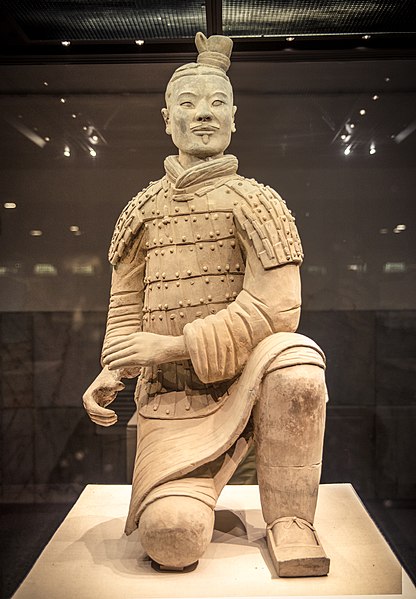Redware as a single word is a term for at least two types of pottery of the last few centuries, in Europe and North America. Red ware as two words is a term used for pottery, mostly by archaeologists, found in a very wide range of places. However, these distinct usages are not always adhered to, especially when referring to the many different types of pre-colonial red wares in the Americas, which may be called "redware".
Redware teapot, Delft, c. 1680, red stoneware imitating Chinese Yixing ware.
Covered Sugar Bowl, Wedgwood, 1805–1815, in Rosso Antico ware with fashionable "Neo-Egyptian" decoration
American redware slip-decorated dish, around 1800
Tea caddy, with "Sally Smith 1769" in the painting. Bucks County, Wrightstown, Pennsylvania
Terracotta, also known as terra cotta or terra-cotta, is a term used in some contexts for earthenware. It is a clay-based non-vitreous ceramic, fired at relatively low temperatures.
International Gothic Bohemian bust of the Virgin Mary; c. 1390–1395; terracotta with polychromy; 32.5 x 22.4 x 13.8 cm
Contemporary terracotta casserole dish
Bust of Élisabeth Vigée-Lebrun; by Augustin Pajou; 1783; terracotta; height: 55cm, width: 44cm, thickness: 21cm
One of the warriors of the Terracotta Army, mould-made Ancient Chinese terracotta sculptures of the armies of Qin Shi Huang, the first Emperor of China








